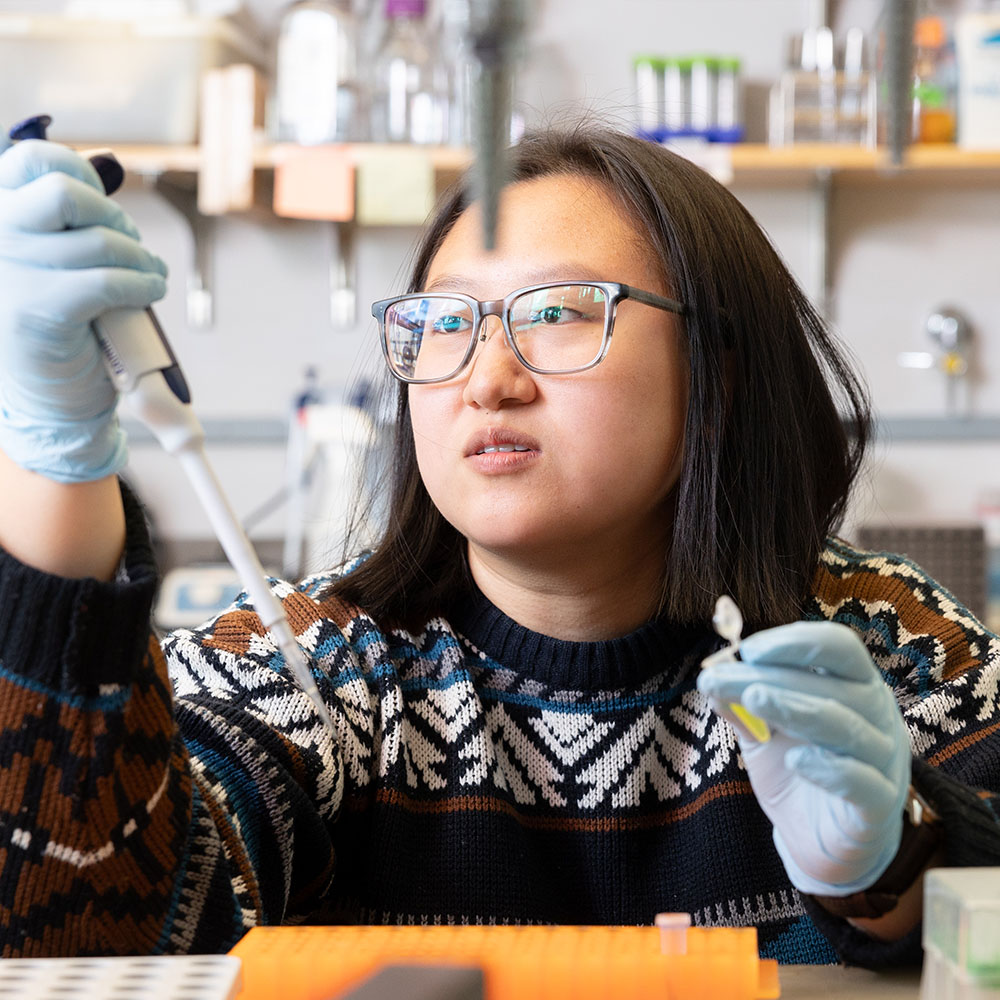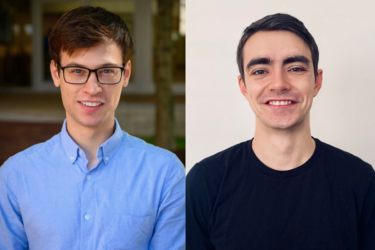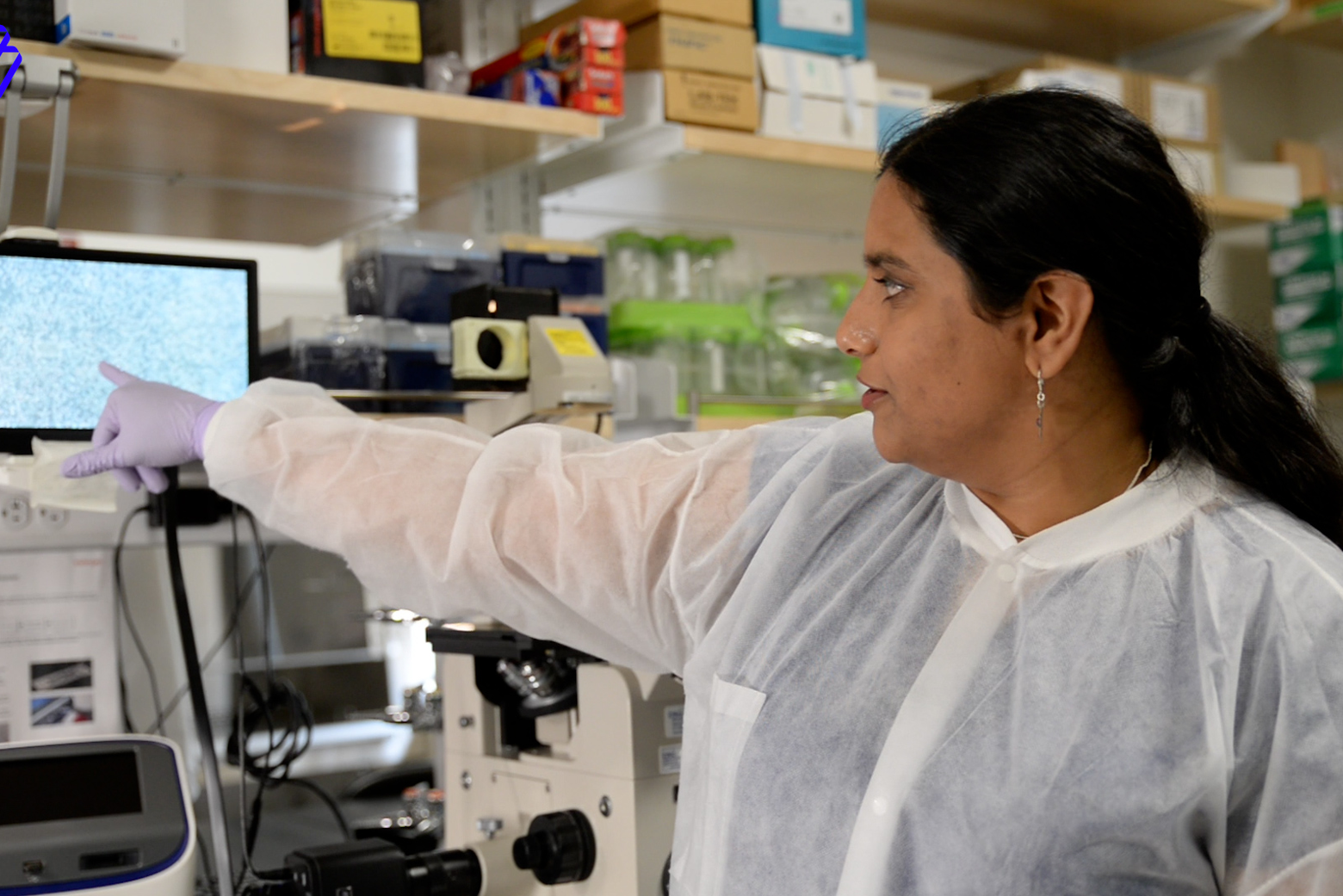
Renee Barbosa, a Schimmel scholar and a graduate student in the Soto-Feliciano Lab, uses a multidisciplinary approach to understand the epigenetic factors in gene expression.
Bendta Schroeder | Koch Institute
July 29, 2024
Professor Emeritus of Biology Paul Schimmel PhD ’67 and his wife Cleo Schimmel are among the biggest champions and supporters of graduate students conducting life science research in the Department of Biology at MIT, as well as in departments such as the Department of Brain and Cognitive Sciences, the Department of Biological Engineering, and the Department of Chemistry, and in cross-disciplinary degree programs including the Computational and Systems Biology Program, the Molecular and Cellular Neuroscience Program, and the Microbiology Graduate Program. In addition to the Cleo and Paul Schimmel (1967) Scholars Fund to support graduate women students in the Department of Biology, in 2021, the Schimmels established the MIT Schimmel Family Program for Life Sciences.
Their generous pledge of $50 million in matching funds called for other donors to join them in supporting the training of graduate students who will tackle some of the world’s most urgent challenges. Driven by their unwavering belief that graduate students are the driving force behind much life science research and witnessing a decline in federal funding for graduate education, the Schimmel family established their one-to-one match program. They reached the ambitious goal of $100 million in endowed support in just two years.
The discovery that mutations in genes can drive cancer revolutionized cancer research. In the decades following the identification of the first “oncogene” in a chicken retrovirus in 1970 and the first human oncogene in 1982 by Robert Weinberg at MIT’s Center for Cancer Research, scientists uncovered hundreds more oncogenes, transformed our understanding of how cancer begins and progresses, and developed sophisticated gene-targeted cancer therapies.
A majority of oncogenes were identified in factors controlling cell signaling, proliferation, and differentiation. However, a growing understanding of epigenetics has shown that many cancers, such as some leukemias and sarcomas, are not driven by mutations to these factors themselves, but by disruptions to the molecular pathways that regulate their expression. About 10 percent of all leukemias are driven by abnormal versions of the protein MLL1, one cog in the epigenetic machinery controlling these factors.
Renee Barbosa, a graduate student in the laboratory of Howard S. (1953) and Linda B. Stern Career Development Professor Yadira Soto-Feliciano in the Department of Biology, is joining this next wave of research, using leukemia as a model. A member of MIT’s Koch Institute for Integrative Cancer Research, Soto-Feliciano and her lab study chromatin, the densely coiled structures of DNA and scaffolding proteins that make up our genomes and help ensure genes are expressed at the right times and in the right amounts.
Barbosa focuses on the role of RNA processing and the precisely choreographed alterations to chromatin that govern gene expression. RNA molecules serve as messengers between DNA and its final product, protein, and are subject to extensive processing and regulation. However, not much is known about the interplay between RNA processing and epigenetic machinery, particularly in cancer.
“I hope that my work will uncover additional layers of complexity in the dynamic landscape of gene regulation,” says Barbosa. “It might also identify new mechanisms that can be targeted to help treat leukemia and other cancers.”
Before Barbosa arrived at the Soto-Feliciano Lab, she was already steeped in the molecular intricacies of cancer.
While at the University of Pennsylvania, she earned a BA in biochemistry and biophysics concurrently with a master’s degree in chemistry. Early on, she joined the lab of Ronen Marmorstein, which used molecular approaches to characterize MEK and ERK, two cancer-relevant members of a class of signaling proteins. Upon starting graduate school, she was excited to branch out into other disciplines.
Barbosa has always taken every opportunity she can to learn. Beginning in grade school, science and math were her favorite subjects, but she also explored music, dance, and foreign languages. At the University of Pennsylvania, she even squeezed in a minor in neuroscience.
With its interdisciplinary approach, the Soto-Feliciano Lab provides Barbosa ample opportunities to learn. Because epigenetic factors can elude traditional approaches, the Soto-Feliciano Lab uses a multidisciplinary strategy, ranging from molecular, to large-scale omics analyses, to disease modeling.
“When I was a grad student, we saw the arrival of powerful new massive sequencing and gene editing technologies — and were enabled to ask big new questions,” says Soto- Feliciano. “I am excited that Renee will have even more resources and opportunities, as we enter the next stage of cancer genetics and epigenetics.”
With the support of a Schimmel Fellowship, Barbosa will be ready to take advantage of new developments in her field.
“Support for research early on in graduate school is an incredible opportunity,” says Barbosa. “It means time to delve deep into the literature of the field and identify challenging open questions that I can pursue in my project. Though exploring these unknown areas requires taking bigger risks, I hope that we will get invaluable insight from an understanding of these nuanced and complex mechanisms.”





